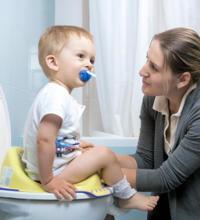What Is Mumps: Get the Facts
What Is Mumps?

Mumps is a highly contagious viral infection, which is common in young children. It’s often recognizable by extremely painful swellings occurring at the side of the face, giving the individual a distinctive hamster face appearance. Other mumps-related symptoms include high body temperature, headaches, and joint pains that might develop a few days before the inflammation of the parotid glands takes place.
When to See Your Doctor
It is important to consult your doctor if you suspect that the symptoms you’re experiencing are associated with mumps. A confirmed diagnosis will be performed to ascertain your condition. While mumps isn’t often serious, the illness causes symptoms that mimic those of serious infections like tonsillitis and glandular fever.
After examining your swellings, your general practitioner usually checks the tonsils in your mouth, and gets your body temperature to establish if it is higher than normal. If your doctor suspects that you are suffering from mumps, he/she should quickly inform your health protection unit. The HPU will then collect for saliva samples to be tested to endorse or rule out the prognosis.
How Is Mumps Spread?
The commonest way through which mumps is spread involves contact with infected saliva droplets that can either be inhaled or picked from contaminated surfaces and transferred into the nose or mouth. An individual is most contagious a few days before the accompanying symptoms develop and a few days afterwards.
During this period, it’s imperative to prevent others from contracting the infection, particularly young adults and teens who have not been vaccinated.
People having mumps can prevent it from spreading by:
- Frequently washing their hands with soap.
- Disposing of tissues after sneezing.
- Avoiding school, parties, or work for at least 5 days after the symptoms manifest.
Preventing Mumps
Young children can be protected against mumps by ensuring that they are given the combined MMR (mumps, measles, and rubella) vaccinations. Your child should receive one dose when they are aged between 12-13 months and the 2nd booster dose just before they start schooling. Once the two doses are provided, the vaccine offers a ninety-five percent protection against mumps.
Treatment for Mumps
There is no precise cure for mumps, but the symptoms usually disappear on their own within 1 or 2 weeks. Treatments are often used to alleviate the symptoms and they include:
- Taking lots of fluid and getting plenty of sleep.
- Applying warm or cool compresses on the swollen glands to relieve pain.
- Using painkillers like paracetamol and ibuprofen - remember, aspirin should not be given to children below 16 years of age.
Complications
Most often, mumps passes without triggering serious damages to an individual’s health. Serious complications are very rare. Nevertheless, mumps can result in viral meningitis if it happens that the virus moves into the external surface of the brain. Other possible complications include inflammation of the testicles in men or the ovaries in women. This takes place if the affected person has undergone puberty.
Who Is Affected?
Young adults who didn’t receive MMR vaccines in their childhood are more prone to mumps. Research indicates that there were more than 2,200 confirmed cases of the illness in Wales and England during the year 2014. Once you have suffered mumps, your body normally develops a lifelong immunity to any further infections.
If your symptoms last longer than two weeks, you may have to consult your doctor for a confirmed diagnosis.









